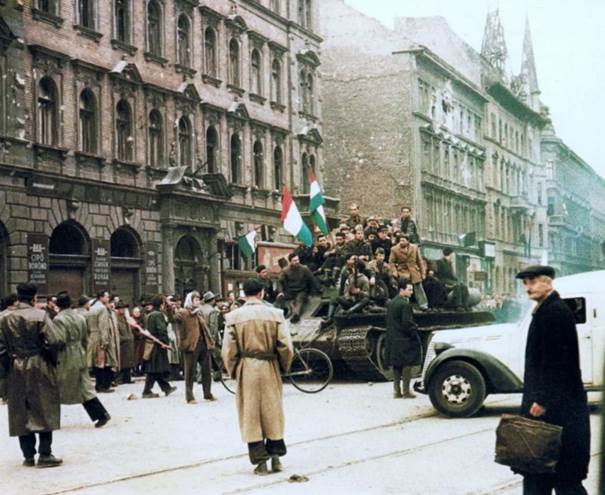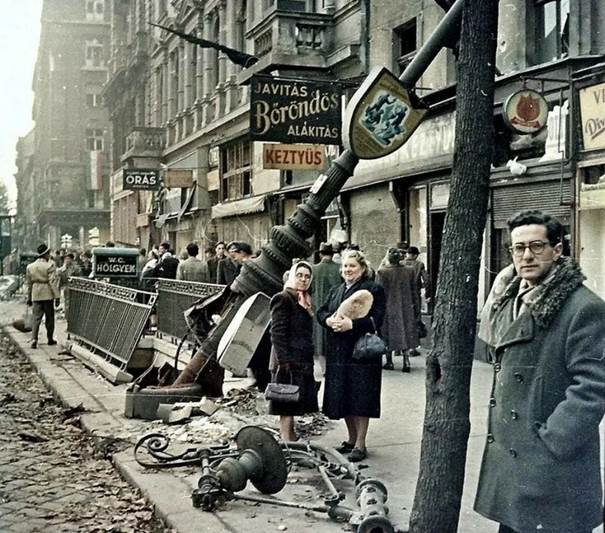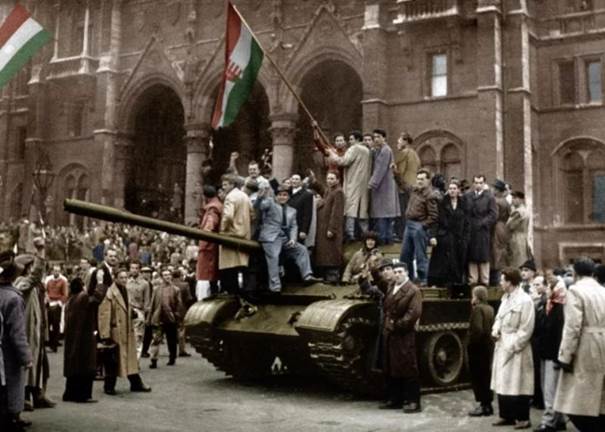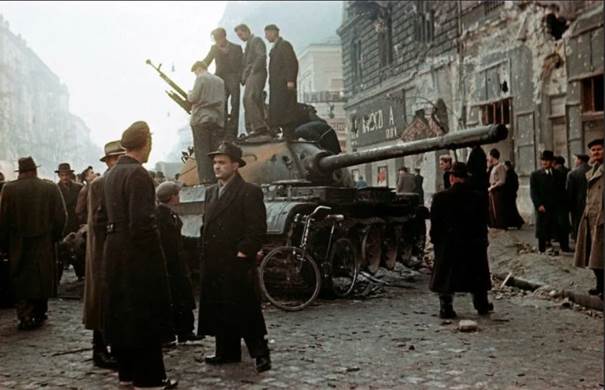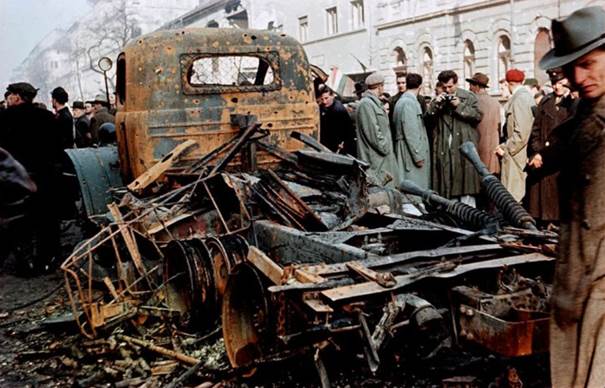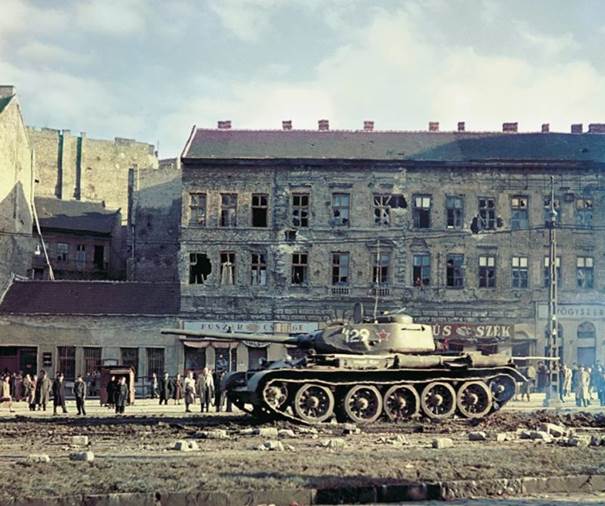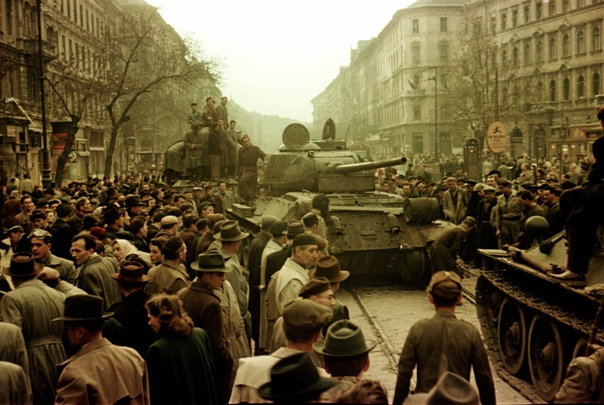The Hungarian Revolt of 1956 in Photos and Soviet Caricature
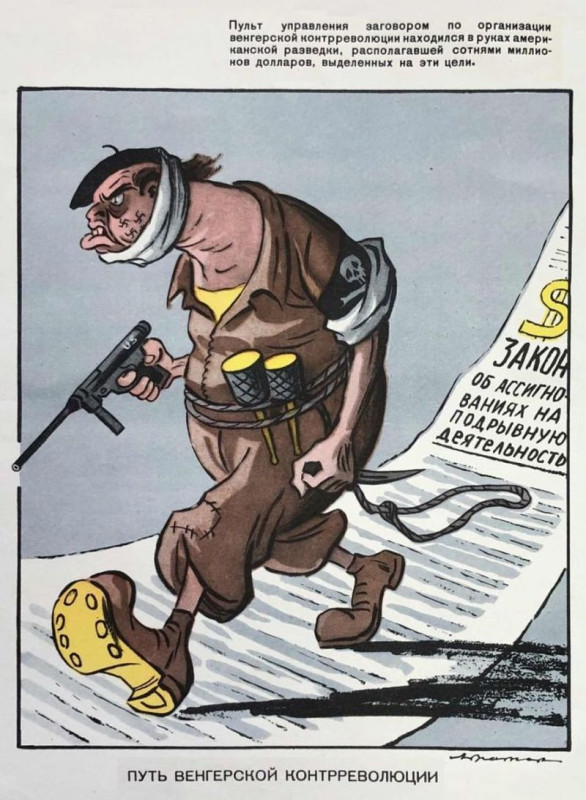
Mark Abramov (1913-1994). “The Path of the Hungarian Counter-Revolution”. “The control panel of the conspiracy to organize the Hungarian counter-revolution was in the hands of American intelligence, which had hundreds of millions of dollars allocated for this purpose.”
On October 23, 1956, a counter-revolutionary uprising began in Hungary. Which was suppressed by the tanks of the Soviet Army. This is how this event was reflected in the Soviet caricature of that time.
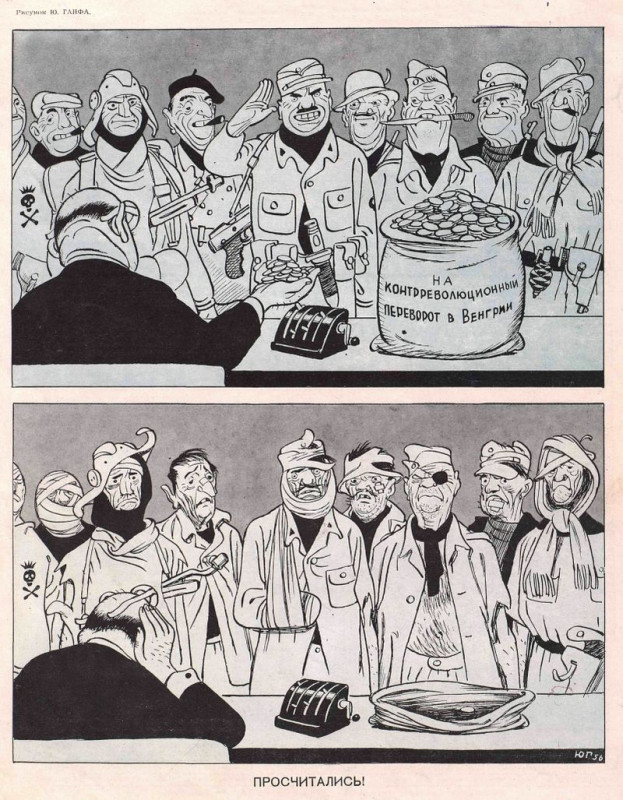
Drawing by Julius Ganfa (1898-1973). The year is 1956. “Miscalculated!”
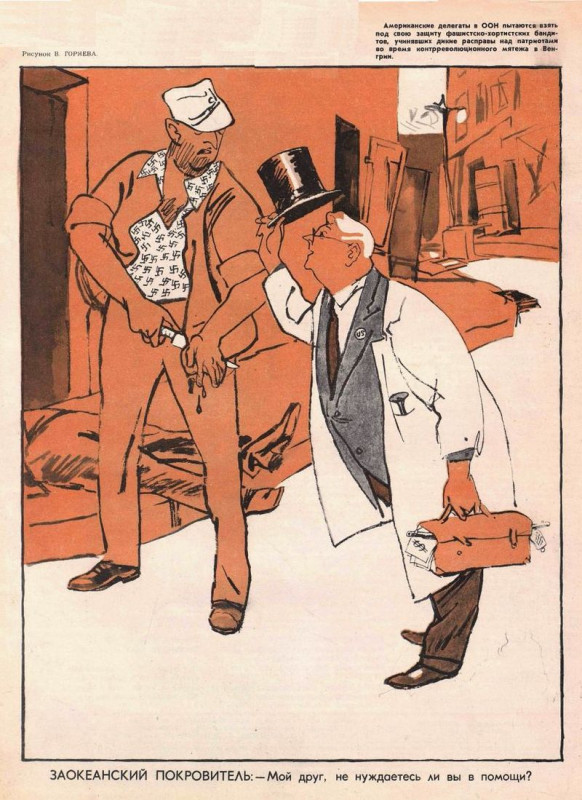
Drawing by Vitaly Goryaev (1910-1982). 1956. “Overseas Patron: ‘My Friend, Don’t You Need Help?’ “The American delegates to the United Nations are trying to take under their protection the fascist-Horthy bandits who committed savage reprisals against patriots during the counter-revolutionary revolt in Hungary.”
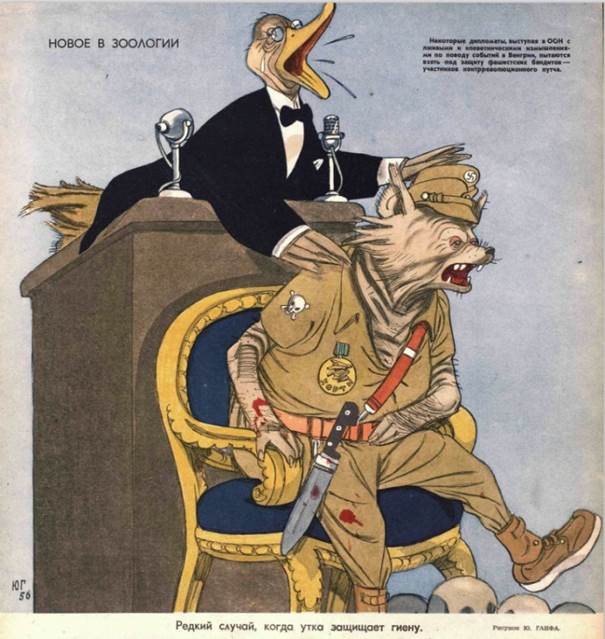
Illustration by Julius Ganfa. 1956. “New in Zoology. It’s rare for a duck to protect a hyena.” “Some diplomats, speaking at the UN with false and slanderous fabrications about the events in Hungary, are trying to take under their protection the fascist bandits, the participants in the counter-revolutionary putsch.”
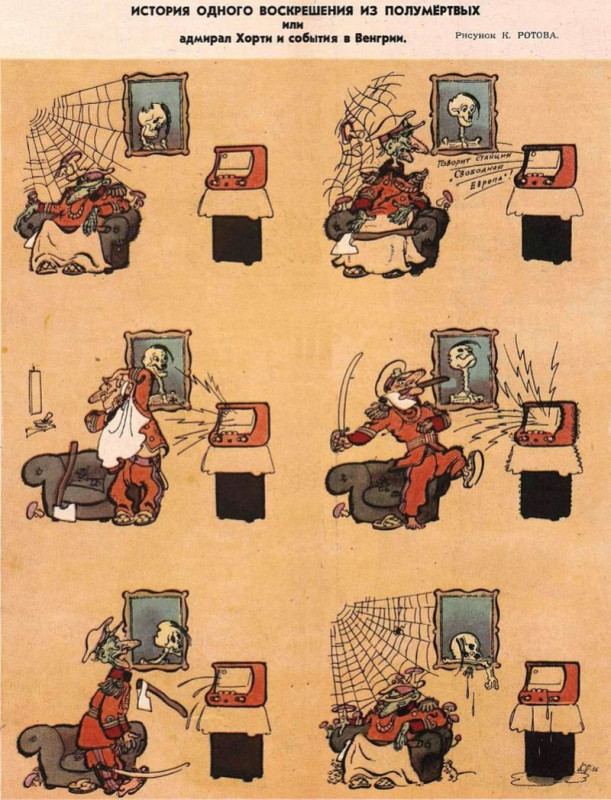
Drawing by Konstantin Rotov (1902-1959). 1956. “The Story of a Resurrection from the Half-Dead, or Admiral Horthy and the Events in Hungary.”
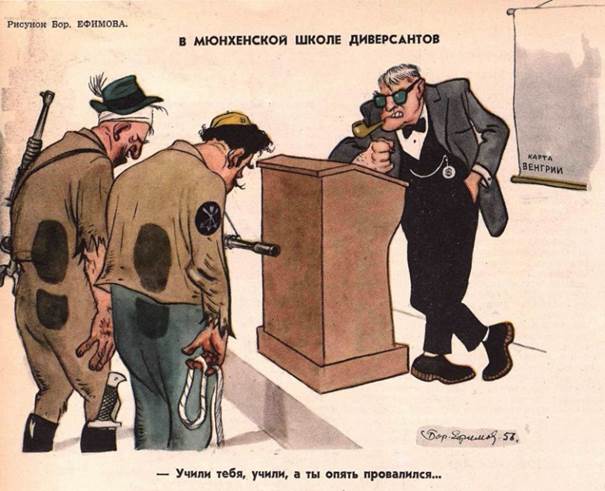
Drawing by Boris Efimov (1900-2008). 1956. “At the Munich School of Saboteurs. “They taught you, they taught you, and you failed again…”
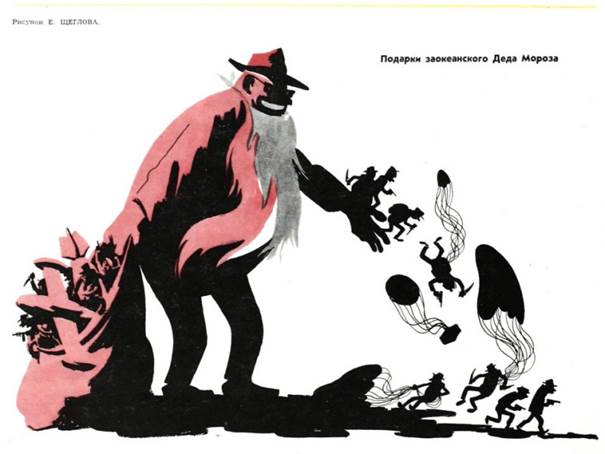
Drawing by Evgeny Shcheglov (1927-1991). 1956. “Gifts of Overseas Santa Claus”.
This will seem a little unusual: the USSR sharply criticizes Cuba, or rather, its delegate to the UN. But this is also Batista’s Cuba, a staunch ally of the United States. There are still two years left before the revolution on the island…
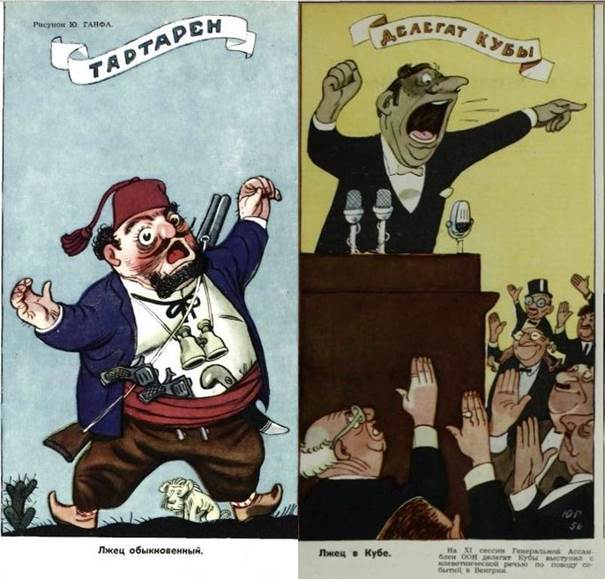
Illustration by Julius Ganfa. Drawing from 1956 (fragment). “A common liar. A liar in Cuba. At the 11th session of the UN General Assembly, a delegate from Cuba made a slanderous speech about the events in Hungary.”
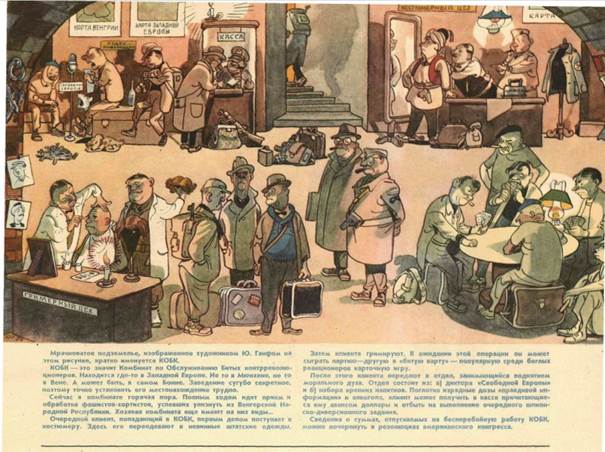
Large and multi-figured, as this artist liked it, the picture by Julius Ganf depicts an imaginary KOBK, a secret “Combine for the Service of Beaten Counter-Revolutionaries” in Western Europe. The year is 1957.
And this is how the Hungarian counter-revolution looked in the photo:
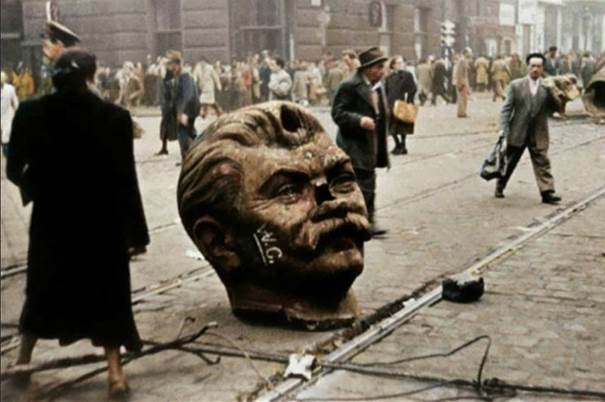
Budapest. The head of the monument to Stalin demolished by the rebels with the letters W.C. – that is, it was proposed to turn it into a water closet
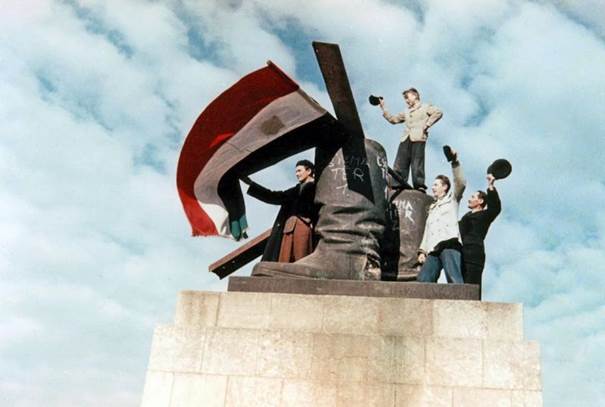
Budapest. And this is the other part of the statue of Stalin that remained on the pedestal – the boots. Near it, the participants of the uprising celebrate their victory
This is how the Hungarian counter-revolutionaries depicted in the above drawings looked in reality:
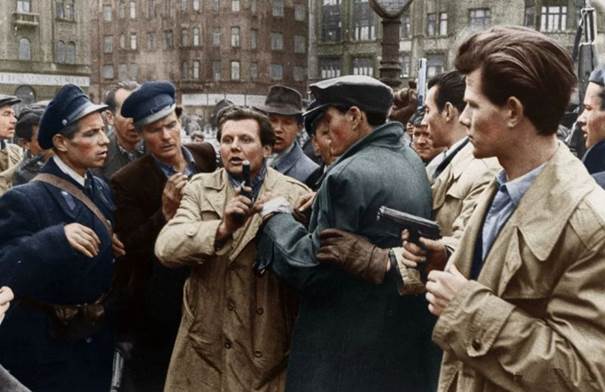
Streets of Budapest in the days of the uprising:
